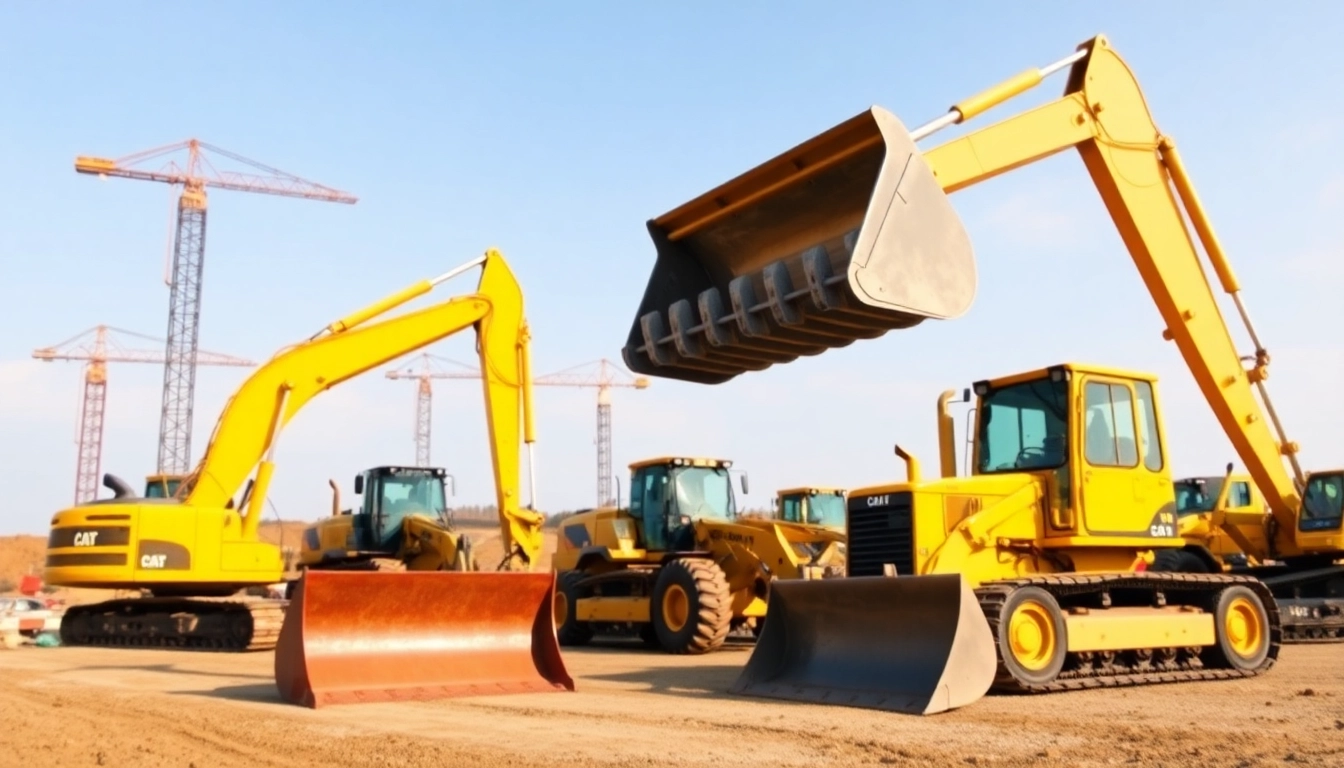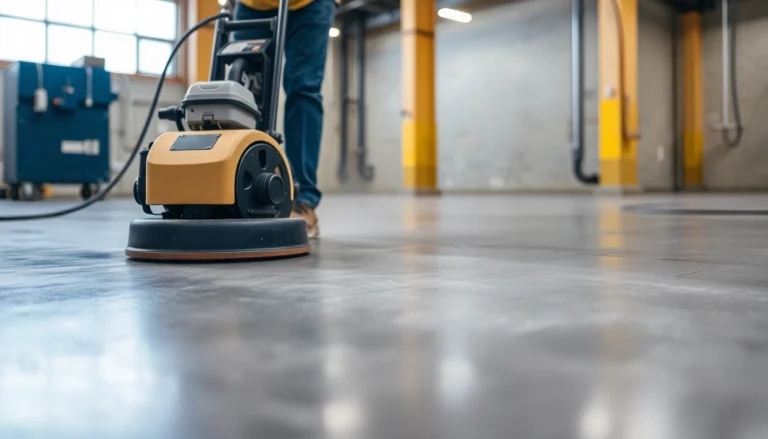Unlocking Success in Construction Projects: The Strategic Advantage of Construction Equipment Rental Across the UK
In the dynamic and competitive world of construction, efficiency, flexibility, and cost control are vital keys to project success. As construction sites become increasingly complex and demanding, the strategic use of construction equipment rental stands out as an essential component for contractors seeking to optimize productivity while managing budgets effectively. Whether managing small-scale renovations or large infrastructure projects, construction equipment rental offers unparalleled advantages that can significantly influence project outcomes and overall profitability.
For UK-based construction companies and project managers aiming to stay ahead in the industry, understanding the nuances of equipment rental—from choosing the right provider to implementing best practices—is critical. This comprehensive guide delves into the core benefits of renting construction machinery, evaluates key factors when selecting a rental partner, and explores practical strategies to maximize equipment efficiency and project ROI. For more insights on how to streamline your construction operations, explore our offerings at Construction equipment rental tailored to your project needs.
Understanding the Benefits of Construction Equipment Rental
Cost Savings and Budget Management
One of the most immediate and tangible benefits of equipment rental is cost reduction. Purchasing heavy machinery involves significant capital expenditure, ongoing maintenance costs, storage, and depreciation. Renting transfers these costs to the rental provider, allowing companies to convert capital expenses into operational expenses. This shift enhances cash flow management and provides clearer budget forecasting.
Rental agreements often include maintenance and repair services, further reducing unforeseen expenses. By paying only for the duration and type of equipment needed, construction firms can avoid the costs associated with equipment underutilization or obsolescence. Such financial flexibility is especially crucial for projects with fluctuating workloads or short timelines, ensuring resources are allocated efficiently.
Access to Modern, Well-Maintained Equipment
Technology advances rapidly in construction machinery, with newer models offering improved safety features, higher efficiency, lower fuel consumption, and enhanced environmental compliance. Rental companies regularly update their fleets, providing access to the latest equipment without the burden of ownership costs. This means contractors benefit from reliable, well-maintained tools that reduce downtime and improve safety standards.
For example, modern excavators equipped with eco-friendly engines or advanced telemetry systems can significantly boost productivity and reduce operational costs. Maintaining a current fleet also minimizes the risk of equipment failure, which can cause project delays. Partnering with reputable rental providers ensures your team operates with cutting-edge machinery, thereby elevating project quality and compliance.
Flexibility for Project-Specific Needs
Construction projects are often unique in scope and scale, requiring specific equipment configurations at different phases. Rental provides unparalleled flexibility, allowing firms to tailor their machinery inventories precisely when and where needed. This adaptability extends to rental duration—short-term, seasonal, or long-term contracts can accommodate project timelines without the burden of unused equipment.
For instance, a construction site may need specialized compactors during foundation work, but switch to cranes or scaffolding during structural phases. Renting allows for these operational shifts, optimizing resource allocation and minimizing idle assets. Additionally, rental agreements can swiftly adapt to project changes, reducing logistical bottlenecks and ensuring continuous workflow.
Choosing the Right Construction Equipment Rental Provider
Assessing Equipment Fleet Size and Range
Selecting a rental partner with a diverse and extensive fleet ensures access to a broad spectrum of machinery suitable for all project stages. A comprehensive inventory—from mini excavators and loaders to large cranes and concrete mixers—enables seamless filling of equipment gaps as the project evolves.
Leading providers like SER or Sunbelt Rentals maintain vast fleets that are regularly inspected for safety and performance. Ensuring the provider can meet your specific equipment needs with quick turnaround times minimizes delays and enhances project coordination.
Evaluating Customer Service and Support
Beyond equipment quality, the level of customer support plays a crucial role in successful rental experiences. A reliable provider offers expert advice on equipment selection, comprehensive delivery and pickup services, and prompt response to technical issues. Access to on-site technical assistance and operator training can significantly boost operational efficiency.
For instance, providers like Ben Burgess or EZiRent emphasize customer support with dedicated account managers and 24/7 availability, ensuring your project runs smoothly without costly interruptions.
Comparing Rental Terms and Pricing Models
Clear, flexible pricing structures and transparent rental agreements are fundamental. Look for providers offering comprehensive quotations with detailed breakdowns, including delivery, insurance, fuel policies, and maintenance provisions. Favor providers with flexible rental durations, volume discounts, and the ability to customize packages to your project scope.
Negotiating long-term rental rates or bundled services can lead to substantial savings. Equally, understanding penalties for damages or late returns upfront prevents unexpected costs and fosters a trustworthy partnership.
Best Practices for Renting Construction Equipment
Proper Equipment Selection for Your Project
Accurately assessing project requirements is the foundation for successful equipment rental. Conduct detailed jobsite analysis, considering factors such as load capacity, terrain, space constraints, and environmental conditions. Collaborate with rental specialists to identify optimal machinery specifications.
For example, choosing compact machinery for urban sites minimizes disturbance and access issues, while high-capacity loaders accelerate material handling in large-scale infrastructure projects. Pre-project planning and consultation with manufacturers and rental companies can prevent costly mismatches and enhance overall productivity.
Scheduling and Logistics Optimization
Effective scheduling minimizes equipment downtime and reduces costs. Use project management tools to synchronize equipment delivery with site readiness, ensuring machinery arrives at the right time without unnecessary storage or waiting periods.
Implement just-in-time delivery strategies, working closely with rental firms to coordinate logistics. Proper planning reduces site congestion, logistical complications, and idle equipment costs. For larger projects, consider staged rental contracts aligned with project phases to optimize resource allocation.
Ensuring Operator Safety and Compliance
The safety of personnel and compliance with regulations are non-negotiable. Only trained operators should handle equipment, and rental companies often provide training programs that cover safe operation, maintenance, and emergency procedures.
Adhere to UK safety standards like the Construction Design and Management Regulations (CDM) 2015, and ensure all equipment is inspected regularly. Incorporating safety protocols at rental agreements mitigates risks and maintains project legality.
Maximizing Efficiency with Rental Equipment
Training Staff on Equipment Use
Invest in comprehensive operator training to improve safety, reduce operational errors, and prolong equipment lifespan. Proper training enhances productivity by ensuring operators are familiar with the machinery’s capabilities and control systems.
Provide ongoing refresher courses and updates as new equipment models arrive. Well-trained staff can troubleshoot minor issues onsite, minimizing downtime and ensuring consistent workflow.
Monitoring Equipment Performance and Maintenance
Implement remote monitoring systems and regular inspection routines to track equipment performance, identify issues early, and schedule preventive maintenance. Modern telematics allow real-time data collection on fuel consumption, engine hours, and operational efficiency.
This proactive approach extends equipment life, reduces repair costs, and ensures safety standards are maintained, ultimately enhancing project timelines and budget adherence.
Implementing Usage Data for Future Projects
Leverage data collected from rental machinery to analyze utilization rates, operational efficiency, and maintenance histories. Use these insights to plan future equipment needs more precisely, negotiate better rental rates, and improve project planning accuracy.
Maintaining detailed records facilitates strategic partnership building with rental providers, encouraging loyalty and priority access to high-demand equipment.
Measuring ROI and Ensuring Long-Term Value
Tracking Project Costs and Timelines
Accurate tracking of costs associated with equipment rental—labor, fuel, maintenance, downtime—enables project managers to assess financial efficiency. Utilizing project management software can integrate equipment costs with other operational expenses, providing real-time insights and enabling swift adjustments.
Analyzing Equipment Utilization Rates
Regular analysis of utilization rates helps identify underused or overused assets, informing purchasing or additional rental decisions. High utilization correlates with better ROI, whereas low rates may suggest the need for better scheduling or equipment reallocation.
Planning Strategic Rental Partnerships
Developing long-term relationships with reliable rental providers offers advantages such as priority access, volume discounts, and collaborative planning. Strategic partnerships can also facilitate equipment upgrades, tailored service packages, and streamlined logistics, ultimately delivering sustained project efficiency and cost savings.



















